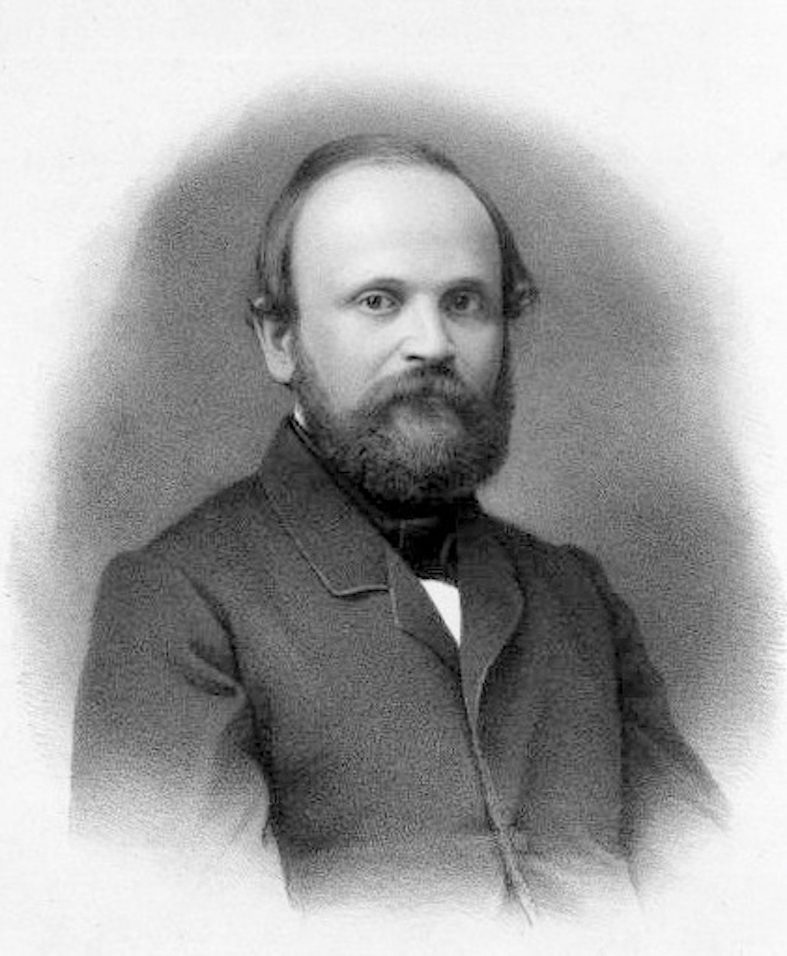JMS Pearce
Hull, England

This article is based in part on an older publication, Lancet 1996.2
The name of Robert Remak (1815–1865) is linked eponymously to several neurological observations. They include Remak’s band, Remak’s fibers, and Remak’s ganglion.1
His father was a cigar merchant, in a ghetto in the Polish town of Poznan.2 He studied medicine in Berlin; his teachers included Johann Schönlein and Johannes Müller. Remak’s career was forged in the face of adversity because Jews were barred from teaching and most high offices by Prussian law. He failed to secure academic support for much of his life. Nonetheless, he experimented tirelessly, often in isolation in his home, supporting his research from his general practice and teaching fees.
As a clinician, he showed the irregular pupillary signs of tabes to Argyll Robertson, who in 1869 acknowledged: “I have seen several such cases while attending Professor Remak’s Clinique in Berlin.”3 The ascending neuritis he recorded in 1861, shortly after Landry’s account of 1859, was the forerunner of the descriptions by Guillain, Barré, and Strohl. It occasions little surprise that embittered by his repeated rejections, later in his career, he turned to studies of galvanic currents in electrotherapy,4 an advance somewhat lavishly described by his acolyte Wilhelm His (of the bundle) as “epoch making.”
Remak’s fibers are probably the best known of his histological discoveries. His thesis in 1838 showed that the sympathetic nerve fibers appeared grey because they had no investment of myelin.5 In Müller’s laboratory he demonstrated the myelin sheath shortly before Theodor Schwann’s famous publications of 1838/9, and observed that it resulted from organized cellular division. The axons of peripheral nerves he discovered to be in direct connection with neurons of the spinal cord (Remak’s band, named axis cylinders by Purkyne [Purkinje]).6
His investigations were impressively diverse. They spanned embryology, pathology, and histology. He showed the sympathetic ganglia were the centers of the autonomic nervous system, and the autonomic ganglion at the junction of the coronary sinus and right atrium (Remak’s ganglion) in 1844.7 The Remak nerve is a ganglionated nerve trunk in the intestine and rectum of fowls.
Truly originaI discoveries of fundamental importance are the gifts of very few.
- Remak was probably the first to demonstrate the six layers of the cerebral cortex.8
- He introduced (with Karl Ernst von Baer) the classification of the embryonic germ layers into ectoderm, mesoderm, and endoderm in a treatise in 1855.9
- He showed that new animal cells arise by binary fission of pre-existing cells.10 The great Virchow did not at first believe in cell division but apparently had a “Damascene conversion” and, three years after Remak, re-published this concept as his own cell theory,11 which stated: Omnis cellula-e-cellula.
- Another cardinal contribution was Remak’s identification of the embryonic neural tube, the forerunner of the rostral brain and its extension as the spinal cord.
- He showed that the sympathetic nerve fibers had no myelin sheath.
Each of these was an achievement of fundamental importance, remarkable considering the limitations of both histological techniques and the limited access he had to examine developing embryos.
Impetuous, sometimes provocative, yet sensitive in nature, his contributions were sparsely acknowledged in his lifetime. His adamant refusal to abandon his religion12 enhanced neither his popularity nor preferment. Eventually Alexander Baron von Humboldt, the illustrious, influential naturalist and explorer, successfully pleaded on his behalf in 1847, resulting in his becoming Privatdozent with the right to lecture at the university. This was nine years after his MD. He had to wait another twelve years to be promoted to associate professor (Extraordinarius), but was never a full professor (Ordinarius).
Remak’s discoveries were of the highest quality, and have survived without correction. He died aged fifty in August 1865 in Bad Kissingen, leaving two sons, Friedrich (1857–1915) and Ernst Julius Remak (1849–1911). Three years before Babinski,13 Ernst Julius described the extensor plantar reflex to the Berlin Society of Neurology in Psychiatry in 1893 in a four-year-old boy with transverse myelitis and called it “Femoral-reflex”:
One is able, through stroking of the distal half of the plantar aspect of the metatarsus primus to evoke a fairly isolated reflex of the extensor hallucis longus.12,14
Ernst Julius Remak’s son, Robert Remak (1888–1942), was a gifted if argumentative mathematician, who was murdered by the Nazis in Auschwitz.
References
- Schmiedebach HP. Robert Remak (1815-1865). Gustav Fischer Verlag, 1995.
- Pearce JMS. Remak, Father and Son. Lancet 1996;347:1669-70.
- Argyll Robertson D. On an Interesting Series of Eye-symptoms in a Case of Spinal Disease. Edinb Med J. 1869 Feb; 14(8): 696-708.
- Remak R. Galvanotherapie der Nerven und Muskelkrankeiten. A. Hirschwald, Berlin, 1858.
- Remak R. Observationes Anatomicae et Microscopicae de Systematis Nervosi Structura. Dissertatio Inauguralis, Reimer, 1838.
- Remak R. Ueber den Inhalt der Nervenprimitivröhren. Muller’s Archiv 1843;8:197-201.
- Remak R. Uber die Ganglien der Herznerven des Menschen und deren physiologische Bedeutung. Wchschr ges Heilk 1839;14:149-54.
- Remak R. Neurologische Erläuterungen. Arch Anat Physiol wiss Med 1844;12:463-72.
- Remak R. (1855) Untersuchungen über die Entwicklung der Wirbeltiere. G. Reimer, Berlin.
JMS PEARCE is a retired neurologist and author with a particular interest in the history of medicine and science.

Leave a Reply